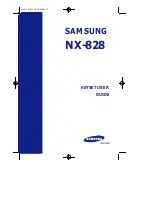
PLEATING EQUIPMENT
Dowel
In order to make pleating easier, the fabric to be pleated should be rolled on to a magnetic
feed-rod available from Read Pleaters as an accessory. Alternatively, use a smooth-surfaced
wooden dowel. (About 1cm/1/2 inch diameter.)
Needles
Needles are interchangeable between the 24- and 32-Row Regular models, and the 24-Row
MAXI. Only use Read Pleater needles, as different brands of needles are not interchangeable
with the Read Pleaters. When fitting needles, make sure that the point of the
needle faces downwards.
Threads
Use a fine, strong polyester thread for pleating. Pastel colour threads are best for pleating as
dark colour threads can leave small residues of colour on light fabrics. The length of gathering
thread can be determined by measuring the widest part of the garment pattern used and adding
10cm (4) extra. A single thread is sufficient for pleating, but if you wish, you may use a double
thread. Do not knot the ends until you are completely satisfied with the pleating. Sometimes
the fabric can produce skewered pleats and you might want to re-pleat the fabric.
Needle threader
A needle threader is provided with your pleater. This threader is of great help in passing the
gathering threads through the needles.
FABRIC PREPARATION
With the exception of lawn and batiste, fabrics to be pleated must be washed, and soaked in
fabric conditioner to remove the manufacturers sizing. Failure to do this may result in breaking
needles during pleating.
The selvages in a fabric are usually thicker than the fabric and should be removed before
pleating to avoid breaking needles.
Most fabrics fray, and before pleating a fabric you should neaten the edges by machine zig-
zagging, overlocking, or cutting them with pinking shear scissors.
The width required for pleating will depend on the weight of the fabric you are using. Thinner
fabrics require 4 to 5 times the final width. Medium fabrics require 3 times, and thick fabrics
2 to 2.5 times the final width.
DIFFERENCES BETWEEN THE READ PLEATERS
The main difference between the Regular 24-Row and 32-Row pleaters, and the 24-Row MAXI,
is that the MAXI pleater has 46 half spaces (47 needles) along the full width of the rollers,
giving the option of using the half spaces as guidelines when smocking, or using the half spaces
to better hold difficult fabrics that tend to open and bubble the pleats. The Regular 24-Row
and 32-Row pleaters only have half spaces across half the width of the rollers.
PLEATING FOR THE FIRST TIME
The pleater has been lightly oiled prior to despatch; and therefore, there may still be some
oil residue on the pleater. To avoid staining the fabric, and as an exercise in becoming acquainted
with pleating, it is advisable to pass an old piece of fabric several times through the pleater.
Once you are satisfied with this exercise, remove the front roller and fit the number of needles
required for your project. Make sure to place two extra needles for holding, as these extra rows
will help to keep the pleats straight when smocking and sewing. Start inserting the needles
from left to right.
Mark the centre of the fabric. Place the prepared fabric right side facing down. The section
where the smocking goes should be at the right. Place the dowel over the top part of the fabric
and allow a small section to overlap the fabric, and then roll it straight onto the dowel.
Insert the rolled fabric through the left side-plate. Align the right edge of the fabric one full
space to the right of the last needle. Feed the fabric straight through the two back rollers and
turn the knob slightly clockwise. Sometimes the fabric is not caught completely straight and
you will need to release the fabric to readjust it. Turn the knob anti-clockwise to
release the fabric.
Important note:
You cannot turn the handles anti-clockwise once the fabric has gone through
the needles. If you attempt to do this, it can break or bend the needles. Rather pass the entire
fabric through the rollers and start again.
The NEW Read Pleater comes standard with left and right hand handles, suitable for both
left and right-handed people. Single-handed pleaters are available on request.
Take your time in pleating. To obtain straight pleating, it is better to pleat two to three pleats
at a time and not allow the fabric to build up on the needles. Turn the rollers using both
handles to obtain straight pleating, or alternate pleating by using right and left handles. Stop
frequently to ease the pleats on to the gathering threads. Also, each time you stop, bring forward
the bulk of the fabric on the left side, and if necessary, also on the right side.
Continue with this process until all the fabric has passed through the pleater. Knot the ends
of the gathering threads and draw back all the pleats. Cut threads off.
Spread the pleats in a way that they almost touch each other. Do not spread the pleats to fit
the widest part of the pattern you will be using for sewing. Rather keep the pleats together
and only spread the pleats when you need to check that the gathered fabric will cover the
widest part of the garment. If you calculated the width of the fabric correctly, it will stretch
to cover the pattern once the gathering threads are released. Long gathering threads hanging
from one side of your work while you smock can become a hindrance. Knot two threads
together with a secure reef knot (left over right and right over left). Do this several times
and cut the excess off. If you are using an odd number of rows, knot two threads together
with a single one.
3
2




















